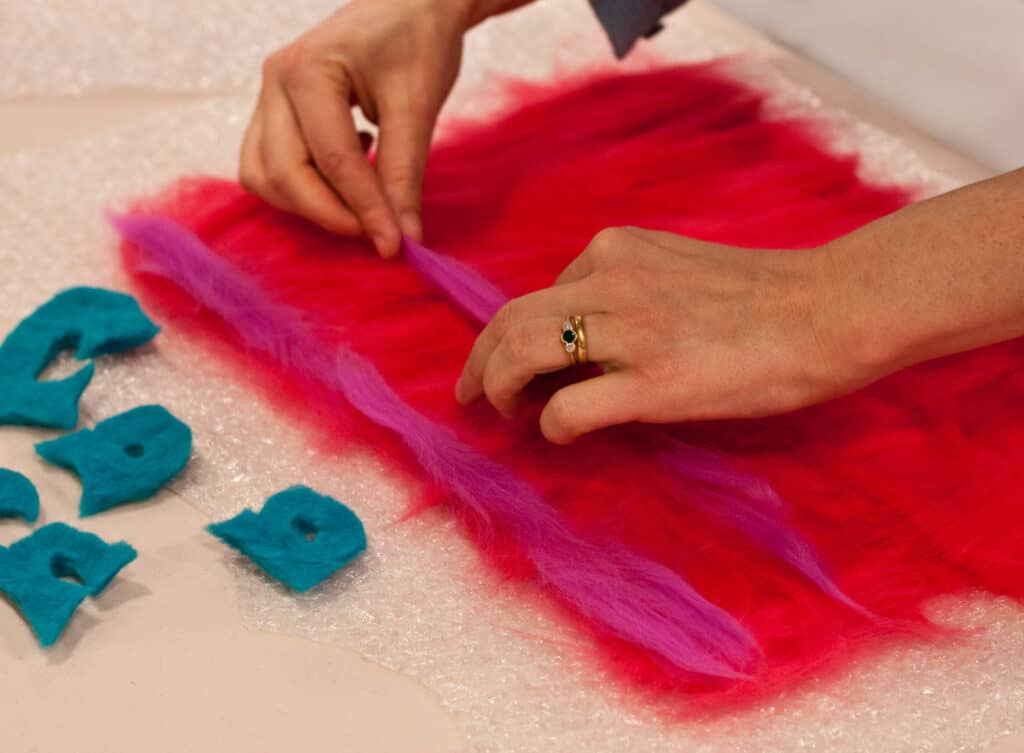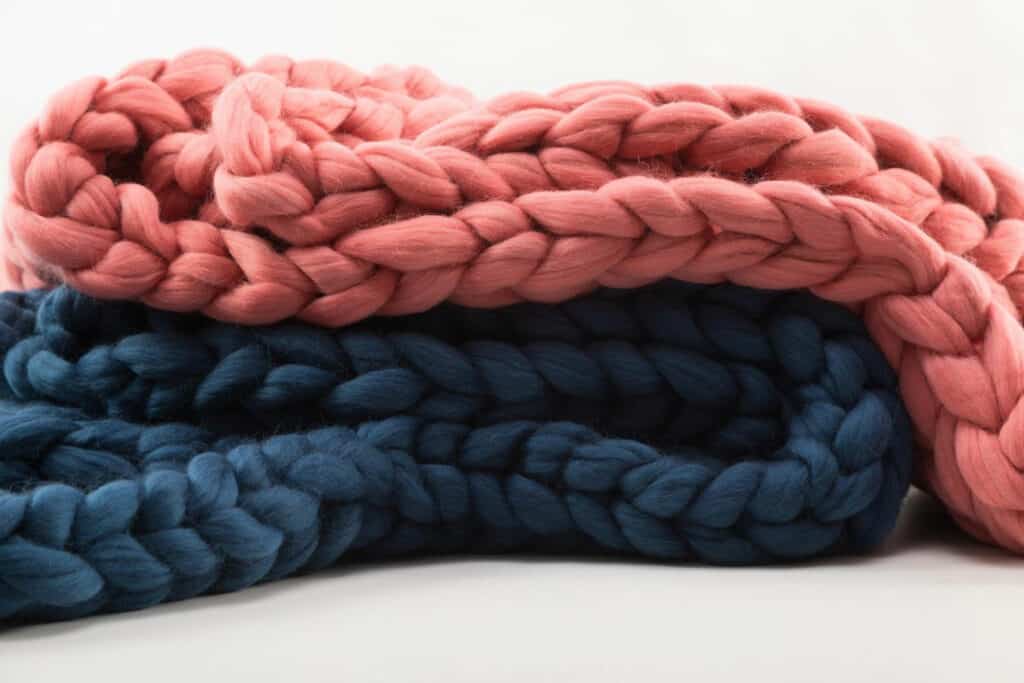Does Merino Wool Itch? Merino wool is a soft, luxurious, and highly-priced wool.
It is a highly-coveted fiber amongst outdoor enthusiasts due to its exceptional warmth and moisture-wicking properties.
However, since merino wool is still a type of wool, people often believe it causes itchiness. This concern raises the salient question: Does merino wool itch?
At the end of this article, you will learn if merino wool itches and how to minimize discomfort.
Table of Contents
- Why Is Merino Wool Itchy?
- How To Tell If You Have Wool Allergies and What To Do
- Making Non-Itch, Machine Washable Fabric
- Conclusion

(A man suffering from skin irritation)
Why Is Merino Wool Itchy?
Merino wool is one of the finest wool fibers. However, if you have sensitive skin, you may find that although thin and soft, merino wool still causes discomfort.
Below are a few reasons why merino wool may cause itchiness.
Lanolin Content
Lanolin, also called wool wax, is present in merino wool. It is a type of wax produced by a few wool-bearing animals (mainly sheep).
Its purpose is to moisturize the animal’s wool fibers and protect them from harsh weather conditions.
Lanolin has conditioning properties that make it perfect for treating various skin conditions.
However, lanolin also causes severe skin allergies in some people leading to itchiness when it touches the skin.
Fiber Diameter
Two significant factors impact how smooth or rough a fiber feels: thickness and structure.
You can know the thickness of a fiber when you measure it by microns which is a thousandth of a millimeter.
Compared to traditional wool, which has 24-40 microns, merino only has 17-21 microns. Typically, the fewer the microns, the softer the wool.
This feature makes merino wool softer and less itchy than traditional wool.
Fiber Smoothness
Fiber smoothness is essential when asking, “is merino wool Itchy?” The surface of wool fibers usually has protruding microscopic scales.
These scales tend to prick the skin, causing itchiness. Merino wool has overlapping and jagged scales, which may cause some discomfort.
You May Have an Underlying Skin Condition
Most people who try merino wool find it more comfortable than other types of wool. However, you may not be one of those people.
You may have a skin condition if merino wool causes extreme itchiness and discomfort.
Skin conditions like textile dermatitis, eczema, or psoriasis may be the unnoticed culprits of your persistent itch.
Skin Temperature and Humidity
Merino wool has thermoregulating properties. This attribute means that the wool cools you in the heat and warms you in the cold.
However, as merino wool production evolves, the garments are getting lighter weight, making them better for colder weather.
Hence, wearing merino wool all year round may cause excess heat leading to skin irritation.

(A woman itching her shoulder)
How To Tell If You Have Wool Allergies and What To Do
In this section, you will learn how to tell if you are allergic to wool and what to do about it.
How To Tell
The best way to find out if you are allergic to wool is to visit a doctor or an allergist.
They will use several tools to test your symptoms and make a proper diagnosis.
However, you can always check at home if you can’t see a doctor. Wear a thick underlayer like cotton underneath a wool garment for a home test.
Check if you react. You are likely, not allergic if you do not see redness after 20-30 minutes.
What To Do
If you discover you are allergic or sensitive to wool, below is a step-by-step remedy to soothe your discomfort.
Use Vinegar or Conditioner
Soak the wool fiber in cold water. Add some tablespoons of white vinegar and let it sit for a few minutes.
Alternatively, you can use a hair conditioner to soften the fibers if you do not have white vinegar. Ensure that the conditioner is wax free before using.
Let it soak
Let the garment soak for 15 minutes if you use white vinegar. For conditioners, let it sit for 20 minutes.
Squeeze and Air-dry
Gently squeeze out excess water. Ensure that you do not stretch out the fabric. Let it air-dry naturally; do not use a dryer.
Fold and Freeze
After it dries, place the garment in a zip lock bag (gallon-size). Store it in the freezer till morning. This method will keep the fibers flat and reduce irritation.
Aside from this method, you can wear another layer underneath your wool garment to curb the itchiness.

(Making a pink felt)
Making Non-Itch, Machine Washable Fabric
Presently, there are more ways than one treatment method for making wool non-itchy and washable.
Below are some of the new treatments available;
Enzyme Treatment
One of the treatments manufacturers use to make wool washable is enzyme treatment.
It is a two-step process that involves oxidizing wool in an H202 treatment and soaking it in an enzyme bath.
This process removes the outer layer or scales from wool fibers, leaving them smoother and less itchy.
Plasma Processing
Plasma processing is an eco-friendly application that modifies wool fibers making them more hydrophilic.
This process makes wool washable and enhances its smoothness.
Ozone Gas Processing
Ozone gas processing is a two-step treatment that involves treating the wool with ozone and UV under steam.
This process breaks down organic compounds in wool fibers. As a result, it reduces shrinkage and removes unpleasant smells.
Nano Material Processing
Nanomaterial processing involves adding nanoparticles to wool fibers.
This process creates a water-repellent surface that resists stains and dirt while improving washability.
Nano processing maintains wool’s natural breathable properties making it ideal for humid weather.
Oxidation with Ecological Polymers
Oxidation with ecological polymers is a process that modifies wool fibers making them less prone to shrinking or felting.
It preserves the natural properties of wool while minimizing environmental impact.

(A blanket of sheep wool)
Conclusion
In conclusion, merino wool is one of the not-so-itchy types of wool due to its small micron size.
However, a few people may still find that merino wool causes them some discomfort.
Remember that a few factors, such as lanolin, skin temperatures, and sensitivity, may cause merino wool to itch.
Following this article’s steps on handling a wool allergy, you can enjoy your merino wool without discomfort.
